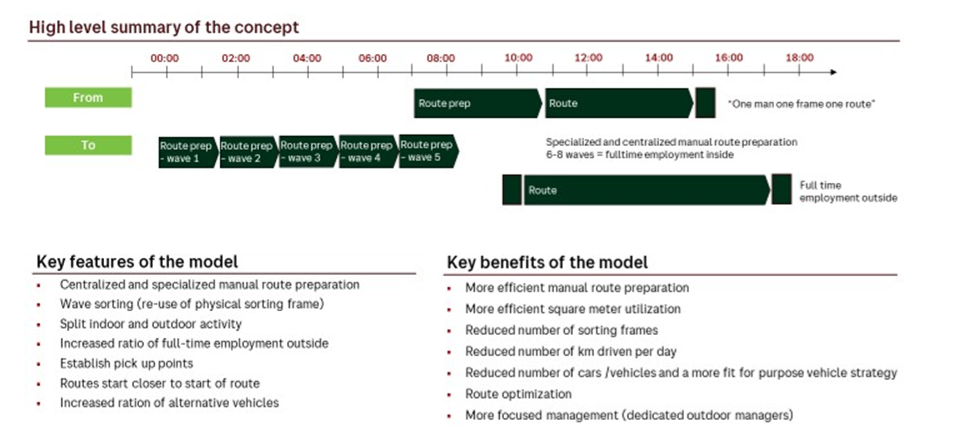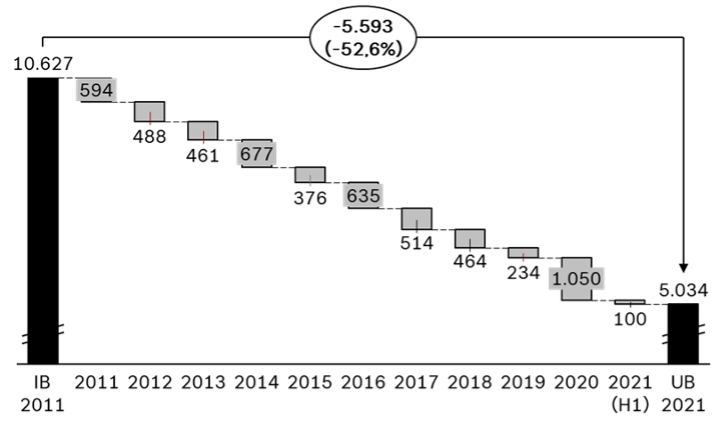Maintaining the universal service obligation (USO) is becoming more and more onerous as letter volumes decline. Denmark has already taken steps to scrap the USO in the face of an untenable situation for the designated operator in this market. Posten Bring (Norway Post) recognized this issue several years ago and has undergone a significant transformation in its mail operations to adapt to the digital age and the decline in letter volumes.
This article highlights several strategic changes that have been implemented by Posten Norge since 2010 to improve efficiency and reduce costs to provide guidance to other posts and stakeholders. At Last Mile Experts, we believe that this is one of the best examples of creativity, foresight and execution, and see this as a best-in-class model for other operators to follow. A second article, coming soon, will cover future ideas for increasing efficiency and making the USO tenable for the foreseeable future.
Service reforms
Let’s look at how things developed in Norway over time. In 2016, full market opening and relaxing of rules allowed for the reduction of delivery frequency from six to five days a week and by 2018, and the relaxation of the transit time target for the fastest standard mail category from D+1 to D+2, merging A-Post (D+1) and B-Post (D+4) into one product line with D+2.
These changes led to a reduction in the number of letter sorting facilities from nine to three and a significant decrease in the use of aircraft for mail transportation. This process was completed with a revision of the Norwegian Postal Act in 2020 which introduced alternate-day delivery (five days over two weeks), which further optimized delivery operations. All these transformation steps were based on changes to the existing USO – a process that required close collaboration between the regulator/government and Posten Bring as the operator.
“We made a plan for this journey back in 2010 called Masterplan 2020, which outlined both the regulatory changes required and internal process improvements such as splitting of indoor and outdoor activities that would stepwise be implemented in the period. We have since consistently delivered according to the plan. ‘Say what you do – do what you say’ is our policy. Transparency combined with a common understanding of the situation as well as clear communication with regards to why and how we change has been vital for success,” explains Christian Brandt, EVP for the mail division at Posten Norge.
Increased efficiently
The Posten team had simultaneously been working on task optimization; each postman spent equal time on indoor sorting and outdoor delivery. With the introduction of machine sequence sorting in 2006/2007, indoor activities gradually reduced. A complete separation of indoor (sorting) and outdoor (delivery) activities was implemented nationwide by 2018. This separation allowed postmen to focus solely on deliveries, spending around seven hours on outdoor activities daily.

Finally, the introduction of ‘wave sorting’ (re-using sorting frames multiple times) significantly reduced the number of required frames and delivery offices, centralizing indoor activities into just a few key locations. The number of manual route preparation facilities was reduced to five by September 2019 and further centralized to only one sorting center by 2022.
Postmen now picked up pre-sorted bundles from around 250 pickup points, facilitating more efficient delivery routes and reducing the total number of routes from nearly 5,000 to 2,800. Simultaneously, management structure was also reformed to improve flexibility and efficiency in route planning and operations.
Address quality was the next target, and a feedback system was established to maintain an up-to-date address database, supported by a mobile application for postmen to record address changes. This system enhanced sorting accuracy and facilitated quicker re-design of delivery routes.
The above noted improvements led to significant cost savings, aligning operational costs with declining mail volumes. The number of full-time equivalent (FTE) staff in processing, transport and delivery was reduced from 10,620 in 2011 to 6,418 in 2018, without compulsory redundancies and in harmony with all stakeholders.

Employment changes
The separation of indoor and outdoor activities was a key driver in this reduction, complemented by reduced delivery days and product line mergers. Above all, everything was done in a carefully planned and well-communicated manner. Changes were made, step by step, with all stakeholders on board and avoiding any unexpected surprises.
“Downsizing is always painful, but as union representatives we understand that dramatically changed customer behavior and reduced letter volumes will mean that we need fewer employees,” comments Lars Nilsen, senior union representative, Fagforbundet. “Our job is to ensure that the process is always handled fair, and that people are given time to find good solutions. Stepwise changes have made the transition easier to handle for all involved parties and helped making natural attrition a large part of the transformation.
“Another key concern for us has been to ensure that all those who still work here have jobs they can live with and off. The fact that also the management of Posten understand this, and have this as a goal, is important for our mutual trust. By working together, I think we all achieve more.”
Norway Post’s transformation is a great example of how traditional postal services can adapt to modern challenges through strategic reforms, technological integration and efficient management practices. These changes have not only improved operational efficiency but also ensured the sustainability of postal services in the digital age. They form a great foundation upon which further developments can be made and which can bring the Norwegian Postal system into the avant garde of USO operators worldwide.
Note: All charts and photos supplied by Posten Norge.
Source link


